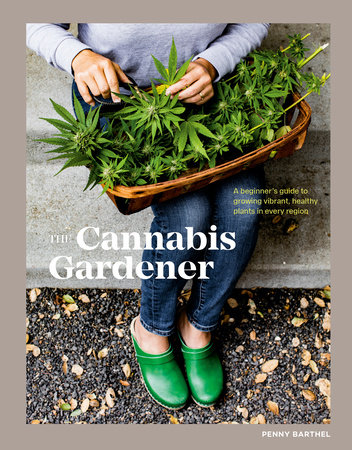Introduction Cannabis is one of humanity’s most useful plants. It is also one of the most notorious and misunderstood plants of all time. It is at once a durable fiber, nourishing food, a health aid, a euphoriant, a social lubricant. It is also—according to US federal law—a schedule 1 drug, meaning that it is considered to be a substance of the highest danger and lowest value to humanity. Is cannabis really all of these things at once? Yes, it is. But we are in a new era, both in the United States and globally.
State by state, cannabis is being legalized, and the pressure is building to de-schedule this gift of nature and create a sane and wholesome appreciation for the potential that this plant can bring to the world. And best of all? It’s really fun to grow in the garden. With a planter, some soil, a cannabis seed, and a spot in the sun, anyone can grow healthy cannabis. I believe that everyone should have access to the gifts of physical, emotional, and spiritual health that cannabis offers to humanity.
I live in California, where cannabis possession and consumption is legal statewide and cultivation is broadly permitted for personal use. Cannabis regulation is constantly changing, making it important for citizens to stay up to date with the latest information. (NORML is an excellent resource for remaining informed.) This recent freedom for weed enthusiasts is not by chance, though. It is the outcome of many hard-won victories by cannabis growers and activists. We owe a debt to people like Dennis Peron and Mary Jane Rathbun, who fought and sacrificed to bring this healing plant out of the prohibition era and into the legal post–prohibition era. Northern California has been the literal seedbed of cannabis innovation and hybridization for the past several decades. I am so grateful for the work of the cannabis warriors who paid dearly for my gardening freedom. But there is still work to be done. Let’s be clear: The war on drugs is rooted in racism and white supremacy. Too many people linger in prison from minor cannabis convictions, and these people are disproportionately people of color. Even after they have served their time, their convictions linger over them, making it difficult to obtain employment or regain the right to vote. I encourage each of us to put our voices and votes toward record expungement and cannabis de scheduling and legalization on a national level. Let’s all support our local BIPOC and equity cannabis businesses and give those who’ve paid an unfair price some space to grow in the new cannabis economy.
To celebrate the new post–prohibition era, consider planting your own cannabis victory garden. There is so much great weed to enjoy, grow, and learn from. Its resins contain unique molecules that are active in just about every cell in the human body—indeed in every mammal’s body. Thankfully, cannabis is an undemanding plant in the garden. It grows just about anywhere and completes its entire life in under a year. The cannabis gardener is free to explore the abundance that this plant offers without the constraints of needing to turn a profit—that’s the work o the cannabis farmer. We gardeners have freedom to experiment with different cultivars and growing techniques because we’re our own clients. We can make mistakes without the fear of financial ruin. I think the best part of growing my own weed is how much joy it brings me. From a small green-gray seed firmly rooted in my own soil comes a magnificent 10-foot-tall beauty, covered with richly scented, sparkly flower buds. And from these flower buds, sticky with resins, I get to craft tinctures, salves, and edibles that keep me feeling great throughout the year. I invite you to join me in an adventure of connection and become a cannabis gardener.
Copyright © 2021 by Penny Barthel. All rights reserved. No part of this excerpt may be reproduced or reprinted without permission in writing from the publisher.







